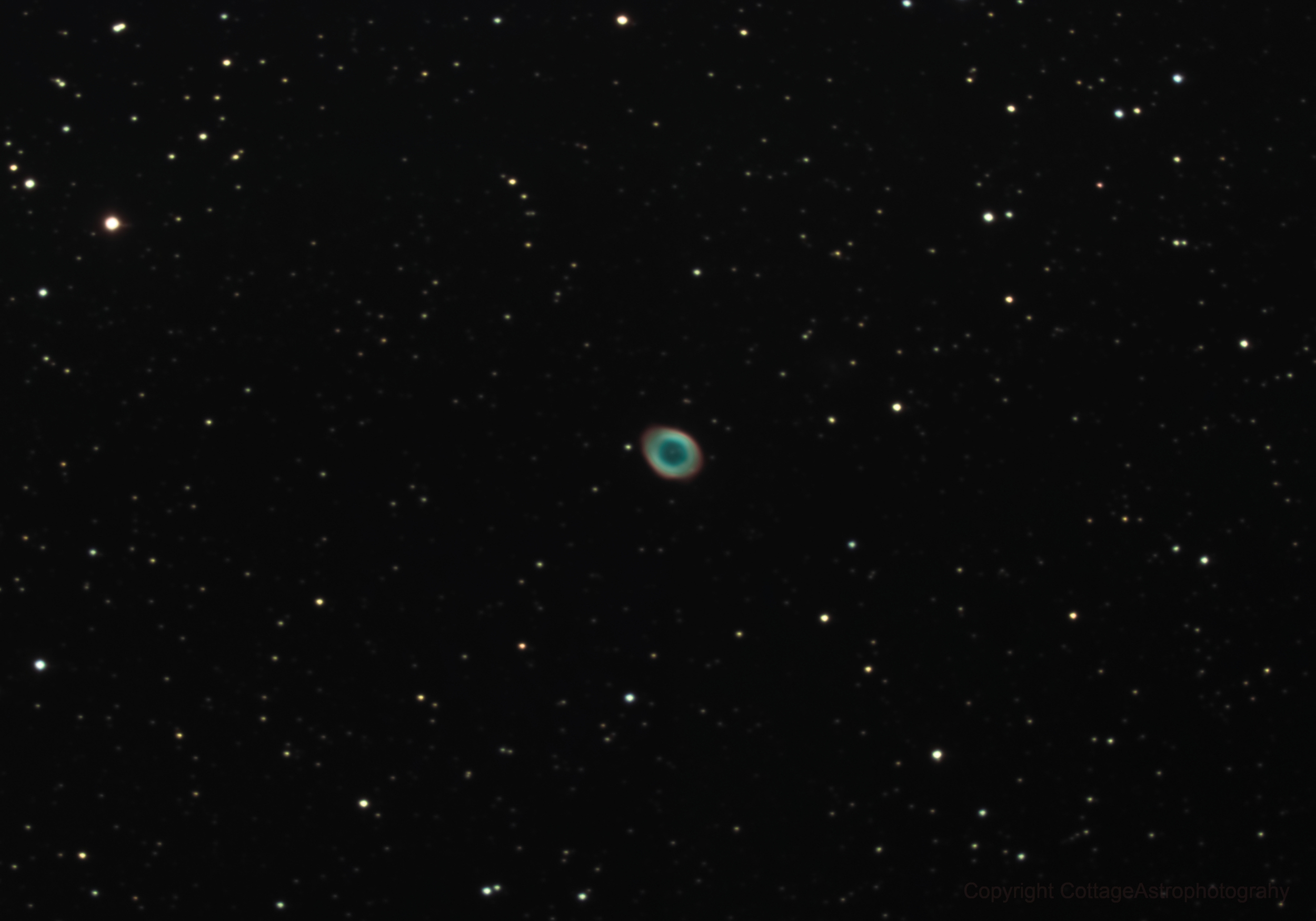Messier 57: The Ring Nebula
Messier 57, also known as the Ring Nebula, is a planetary nebula located in the constellation of Lyra. It was discovered by the French astronomer Charles Messier in 1779 and was the first planetary nebula to be identified as such. The Ring Nebula is one of the most famous and well-studied planetary nebulae in the sky and is a popular target for amateur astronomers.
The nebula is a cloud of gas and dust that was expelled from a central star, which is now in the process of becoming a white dwarf. The central star is surrounded by a ring-shaped structure that glows brightly due to the emission of ultraviolet light from the star. The ring is estimated to be about one light-year in diameter and is expanding at a rate of about 45 kilometers per second.
Despite its relatively small size, the Ring Nebula is a fascinating object to observe and study due to its complex structure and its significance in the understanding of the life cycle of stars. The study of planetary nebulae like Messier 57 has provided important information about the evolution of stars, including the process by which they shed their outer layers and evolve into white dwarfs. The Ring Nebula is a beautiful example of the spectacular sights that can be found in the night sky and is a must-see for anyone interested in astronomy.
Capture Details
Imaging Telescopes: Celestron EdgeHD 9.25″
Imaging Cameras: QHYCCD QHY268 C
Mounts Celestron: CGX
Accessories: QHY Polemaster · Celestron .7x Focal Reducer
Software: NINA – Nighttime Imaging ‘N’ Astronomy Guiding Telescopes: Orion 50mm Guidescope
Guiding Cameras: Orion StarShoot AutoGuider

